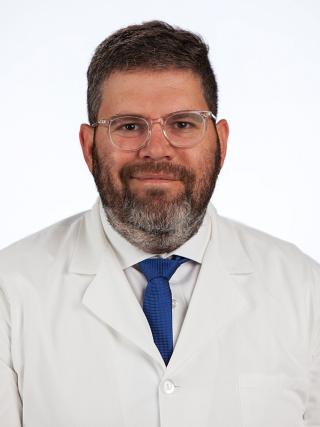
University Of Utah Hospital Performs Surgical Treatments for Obsessive Compulsive Disorder and Major Depression Disorder
Between 1% and 2% of adults in the U.S. experienced symptoms of obsessive-compulsive disorder (OCD) in the past year. About 10% of adults suffer from major depressive disorder (MDD). While there are several types of treatment for these disorders, about 20-40% of OCD patients and 30% of MDD patients have failed to respond to drugs and psychotherapy and are considered treatment resistant. The psychiatric-neurosurgical center at the University of Utah Hospital and the Huntsman Mental Health Institute offers three innovative surgical approaches to relieve the suffering of treatment-resistant OCD and MDD, making it one of just a handful of hospitals in the United States, and the only one in the Mountain West region, to do so.
“These treatments are highly effective. Considering these patients have failed everything else, I think the treatments are potentially life-
changing,” said Ben Shofty, MD, PhD, a functional neurosurgeon at the U of U Health’s Clinical Neurosciences Center. “These patients can actually go back to living relatively normal lives.
“We had an OCD patient who was basically house-ridden for more than three years,” added Shofty. “Leaving his house would take four to six hours because he had to do so many rituals and compulsions. We operated on him successfully, and six months later, he was back at work. He still has OCD, but he manages it.”
OCD is a psychiatric disorder characterized by recurrent, unwanted thoughts and repetitive behaviors that a person feels driven to perform. These obsessions and compulsions can interfere with daily functioning and cause significant distress and quality of life impairment.
MDD is characterized by persistently depressed mood or loss of interest in activities.
For a patient to be considered for U of U Health’s surgical interventions for OCD and MDD, they must have availed all other therapeutic options for at least five years.
Deep Brain Stimulation (DBS) involves surgically implanting a small electrode that delivers an electrical current directly to specific areas of the brain. This technique has been used for more than three decades, notably for movement disorders such as Parkinson’s disease and essential tremor, and the FDA approved it for OCD in 2009.
To treat OCD, a neurosurgeon places the device in the ventral striatum, a brain region involved in compulsive behavior. The current does not kill neurons in the region but alters their firing, leading to relief of obsessive thoughts and behaviors. The chronically implanted electrode has two advantages: The current and frequency are adjustable and it’s a reversible therapy. Between 50 to 60% of patients respond to DBS for OCD, meaning that their symptoms are reduced by at least 35%
Laser ablation is a minimally invasive technique that uses lasers, under MRI guidance, to target and destroy just the specific brain cells that cause OCD.
Vagus Nerve Stimulation (VNS) employs an implantable device that delivers mild, intermittently pulsed signals to the vagus nerve in the neck to alter neuronal firing in brain regions responsible for MDD symptoms. Surgery for treatment-resistant depression is a more recent field, so VNS procedures are currently done in clinical trial settings, with results that will vary depending on the specific trial.
Hospital recovery time for laser ablation is usually one day, while most patients undergoing DBS and VNS go home after two days.
At U of U Health, psychiatrists Brent Kious and Brian Mickey perform comprehensive patient evaluations. If they determine a patient is eligible, Shofty performs the appropriate surgical procedure at the U of U Health Clinical Neurosciences Center. In addition, Kious, Mickey, and Shofty are working to establish a clinical trial program to further innovate these approaches.
One of the good things about these therapies, Shofty said, is that they allow treatment-resistant patients to respond to medication and psychological therapies such as exposure and response prevention. “The interventions help enormously, but just as important, they enable patients to respond to other types of therapies.”
# # #
